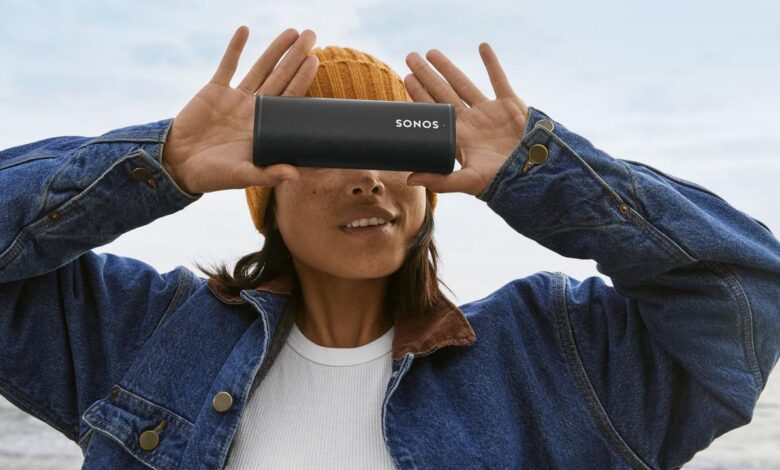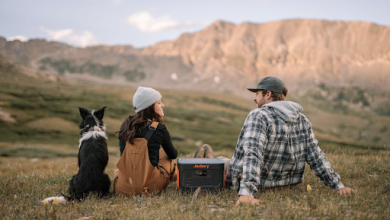Smart speaker boom: will you let a gadget watch you sleep?

A new generation of smart speakers is coming, offering to keep you connected, follow you and watch you sleep at night.
Australians added another 600,000 smart speakers to their homes last year, putting Alexa, Siri, and Google’s Assistant in lounge rooms, kitchens, home offices and even bathrooms and bedrooms.
The devices, which listen for commands, are now in more than 2.8 million Australian households, according to research from Telsyte and they deliver music, alarms, weather reports, and streaming radio.
But eavesdropping and security fears aside, we’re so comfortable with the connected technology it’s triggered a demand for health-tracking technology that experts warn could be useful to some but “creepy” to others.
Google, Amazon and Sonos are some of the companies behind the new wave of smart speaker tech arriving in stores, though Apple is also set to play a bigger role this year.
Google’s second Nest Hub, for example, features low-energy radar technology, called Soli, that will let users control music playback or alarms by waving or holding their hands up near the device.
But the internet giant is taking technology one step further, and will use it to track a user’s sleep quality.
Google Nest product manager Kayiita Johnson says the Sleep Sensing feature was added after its predecessor, which lacked a camera, proved popular on bedside tables.
“We really wanted to increase the utility and usefulness of these Nest Hubs in bedrooms,” he says.
The $149 device promises not only to track with a radar a user’s body movement during sleep but the rise and fall of their chest to monitor breathing. The results are delivered on the speaker screen when they wake, along with suggestions for better rest.
Other new smart speakers launching this year include Amazon’s new top model Echo Show, with technology that can automatically track and follow a user’s face during video calls, and the highly portable Sonos Roam that offers access to a user’s choice of Alexa or Google.
Telsyte managing director Foad Fadaghi says some Aussies are using these speakers to replace “older hi-fi systems,” others are adding them to control smart lighting or doorbells, while more are being placed in home offices to set reminders and alarms.
“It is such a fast-moving market,” he says. “Consumers particularly during the pandemic and we assume after it will spend more time at home so we’re seeing new use cases for smart speakers driving the growth of the market. We’re seeing the work-from-home aspect, we’re seeing children using them for education, we’re seeing more people using more functions.” Fadaghi says all three smart speakers are likely to find keen buyers in Australia, with expectations sales and smart home upgrades will continue to grow in 2021.
But he says some may draw the line at having a smart speaker watch them, as well as listen to them.
“It comes down to how comfortable consumers are sharing data with a technology company. It’s not inconceivable some would look to this kind of product to help them with health concerns but others will see it as unnecessary and even a bit creepy. It comes down to individual choices and these companies making it clear how their data is used and where it is stored.”
Google Nest Hub, 2nd gen ($149): It arrives without a camera but this generation takes its bedroom credentials one step further. It uses low-energy radar and microphones to assess the quality of a user’s sleep. Google says coughing and snoring noises are processed and a report is shown on its seven-inch screen in the morning, along with tips for how to get better slumber. Sleep Sensing can be turned off and the speaker will act as a smart hub without it.
Amazon Echo Show 10, 3rd gen ($399): This is designed for use in the heart of the home, with a generous 10.1-inch touchscreen, a 13-megapixel camera for video calls, and a mechanically powered base to follow and frame users while they’re talking. The Echo Show can also be used remotely, in case you want to see what your pets are doing when you’re away, and features a physical camera shutter and mute button for privacy.
Sonos Roam ($279): Available from April 20, this speaker is smart and smaller than a typical drink bottle but can stream tunes over Wi-Fi or Bluetooth, resisting water or drops, and will play music for up to 10 hours on a single charge. Being a Sonos, it also delivers clear and deep audio and can respond to your music requests (and other commands) via Amazon’s Alexa or the Google Assistant.




